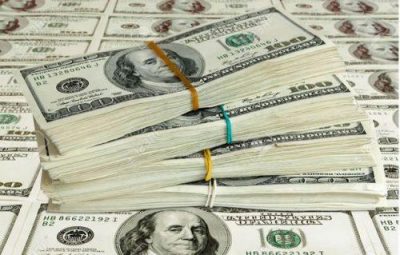U.S. national debt surpasses $30 trillion
The U.S. national debt has surpassed $30 trillion, for the first time, raising concerns about future fiscal sustainability.
The new debt threshold was reached as the Federal Reserve prepares to raise interest rates to tame inflation.
The total public debt outstanding exceeded $30 trillion on Monday.
This included $23.5 trillion in debt held by the public and $6.5 trillion in intergovernmental holdings, according to the U.S. Treasury Department’s daily treasury statement.
The national debt increased sharply in recent years, in part because of former President Donald Trump’s large tax cuts and massive government spending to fight the COVID-19 pandemic, analysts said.
The milestone of $30 trillion in debt should be “a giant red flag for all of us about America’s future economic health, generational equity, and role in the world,” said Michael A. Peterson, CEO of the Peter G. Peterson Foundation.
“How we got here is a long story of repeated chapters of fiscal irresponsibility on both sides of the aisle.
“Leaders in Washington have made imprudent decisions over decades, time and again choosing a favourite new tax cut or spending program above our collective future,” Peterson said Tuesday in a statement.
Peterson also warned that on the current trajectory, the interest on the national debt will rise to eat up nearly 50 cents of every tax dollar collected in 2050.
“It’s not only unsustainable, it’s a moral failure that will harm our children and grandchildren,” he said.
He urged policymakers to put the nation on a strong and sustainable fiscal path.
The rising national debt came after U.S. Congress passed legislation in December to raise the federal government’s debt limit by 2.5 trillion dollars to about 31.4 trillion dollars, averting a looming debt default.
The Fed signaled last week that the central bank is ready to raise interest rates as soon as March to combat surging inflation as it exits from the ultra-loose monetary policy enacted at the start of the pandemic.
Now traders have priced in a total of five quarter-point rate hikes this year, bringing the federal funds rate to a range of 1 percent to 1.25 percent by the end of the year.
The rate hikes will certainly push up U.S. debt service costs.
A growing debt burden could increase the risk of a fiscal crisis and higher inflation as well as undermine confidence in the U.S. dollar.
This will make it more costly to finance public and private activity in international markets, the Congressional Budget Office has warned.


